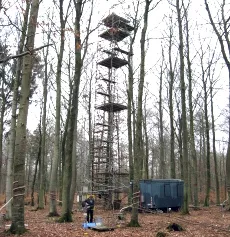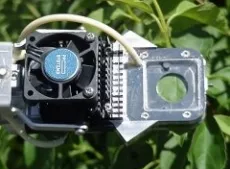Plant water use efficiency
This prohject is finished. The study wass carried out at Risø National Laboratory, Roskilde, Denmark and was run under an EU financed Marie Curie Individual Intra-European Fellowship during 2006 to 2010.
Assessment of carbon cycling and greenhouse gases by WUE
In this project, a novel approach to assess net stand carbon uptake is used. The approach has an interdisciplinary character as it introduces the concept of water use efficiency (WUE), traditionally used for agricultural yield estimations and drought tolerance of plants, in the field of biosphere carbon cycling and greenhouse gas mitigation.
Water Use Efficiency (WUE)
The concept of WUE relies on the strong link between plant carbon uptake by photosynthesis and plant water use from transpiration, depending on the common pathway of the two fluxes – through the stomata. On seasonal and annual time scales, WUE is a useful parameter because it appears to be a conservative species property where the variation is largely explained by the air vapour pressure deficit. If the same relationships are valid for instant leaf fluxes, up-scaling from leaf to stand can be estimated from up-scaled sap-flow measurements.
Fluxes in decidiuous forests
In this project, the suitability for using the concept of WUE as a means of up-scaling carbon fluxes for deciduous forests is evaluated. This is achieved through estimations of transpiration and carbon flux relations at leaf level, including both analysis of earlier measurements on a large number of leaves and new measurements of leaf carbon and water exchange as well as branch sap-flow, and validated against net ecosystem fluxes measured by eddy covariance techniques.
Contact information
Department of Physical Geography and Ecosystem Science
E-mail: maj-lena [dot] linderson [at] nateko [dot] lu [dot] se (maj-lena[dot]linderson[at]nateko[dot]lu[dot]se)



